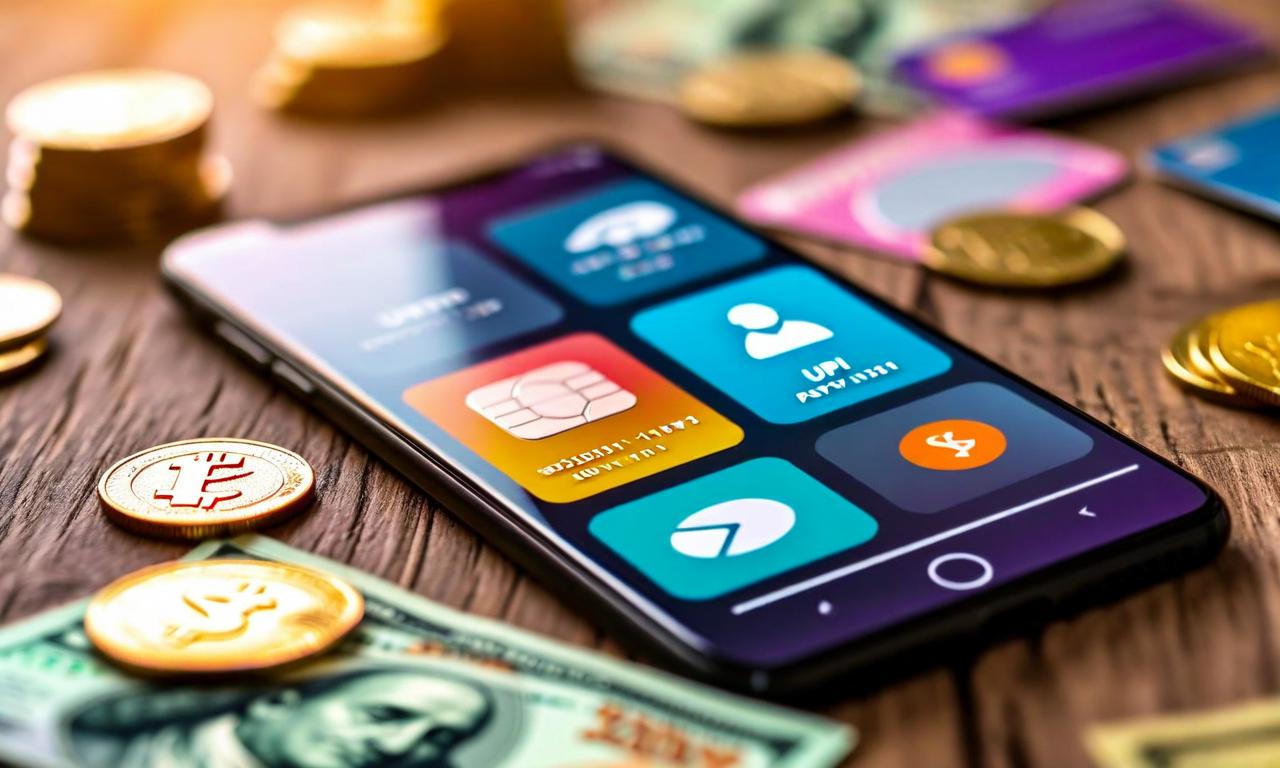Paytm and SBI Cards May Benefit from Rising UPI-Linked RuPay Credit Card Usage
Bernstein research highlights potential benefits for Paytm and SBI Cards as RuPay credit cards linked to UPI gain popularity in India. RuPay credit cards now account for 40% of UPI transaction volumes and 8% of transaction value. Paytm may see improved take-rates due to higher monetization potential of credit transactions on UPI. SBI Cards is experiencing growth in UPI-linked credit card transactions. RuPay's credit card market share has increased to nearly 16% from 3% two years ago. This shift in market dynamics may reshape the competitive landscape of the digital payments sector, potentially challenging traditional POS terminal providers.

*this image is generated using AI for illustrative purposes only.
Bernstein research highlights potential gains for Paytm and SBI Cards and Payments Services Ltd. as RuPay credit cards linked to UPI gain traction in India's digital payments landscape. This shift in market dynamics may reshape the competitive landscape of the digital payments sector.
Key Highlights
- RuPay credit cards, integrated with UPI in late 2022, now account for approximately 40% of transaction volumes and 8% of transaction value on the UPI network.
- UPI-focused companies like Paytm may see improved take-rates due to the higher monetization potential of credit transactions on UPI.
- SBI Cards is experiencing growth in UPI-linked credit card transactions.
- RuPay's credit card market share has increased to nearly 16% from 3% two years ago.
Impact on Key Players
Paytm
Paytm, a leading UPI-focused company, may benefit from this trend. The shift of credit transactions to UPI is expected to enhance take-rates for such platforms, as credit-linked UPI transactions typically offer higher monetization potential compared to debit-linked ones.
SBI Cards and Payments Services Ltd.
SBI Cards is witnessing an increase in UPI-linked credit card transactions. This growth aligns with the overall trend of increasing adoption of RuPay credit cards on the UPI network.
Market Dynamics
The integration of RuPay credit cards with UPI is changing the landscape of digital payments in India. Here's a breakdown of the key factors:
| Aspect | Details |
|---|---|
| Transaction Volume | RuPay credit cards on UPI represent ~40% of transaction volumes |
| Transaction Value | ~8% of transaction value on UPI network |
| Average Transaction Size | Below Rs 1,000 for UPI-linked credit card spending |
| RuPay Credit Card Market Share | Increased to nearly 16% from 3% two years ago |
| Merchant Discount Rates | Applicable only for large merchants and transactions above Rs 2,000 at small merchants |
Implications for the Industry
Broader Merchant Acceptance: The selective application of merchant discount rates has enabled wider acceptance among smaller merchants, contributing to RuPay's increased market share.
Shift in Transaction Methods: The move from card-based to QR-based acceptance, especially among small merchants, may pose challenges for POS terminal providers like Pine Labs Ltd.
Enhanced Monetization: UPI-focused companies are likely to see improved monetization opportunities due to the higher potential of credit-linked transactions.
Looking Ahead
As the adoption of UPI-linked RuPay credit cards continues to grow, it's expected to further transform India's digital payments ecosystem. Companies that can effectively leverage this trend, like Paytm and SBI Cards, may be well-positioned to capture a larger share of the evolving market.
While this development presents significant opportunities, it also signals potential shifts in the competitive landscape, particularly for traditional POS terminal providers. As the market continues to evolve, adaptability and innovation will be key for companies looking to maintain their edge in India's dynamic digital payments sector.




























